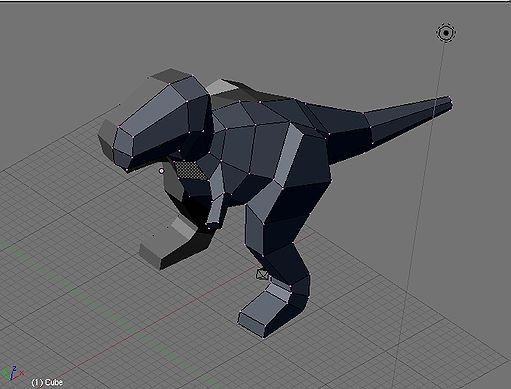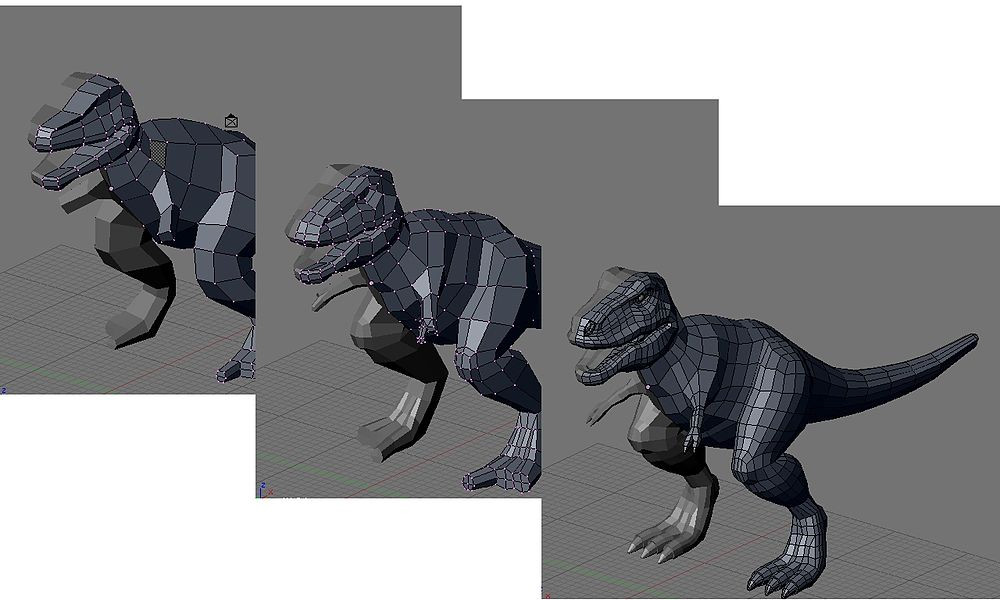Blender 3D:各种各样的教程
Easy to undertake and flexible, box modeling is a favorite of beginners and veterans alike. It is fun to work with and general results are visible in a short time. It is a powerful work flow that any modelers should know.
::方便进行和灵活,盒子建模是初学者和老兵的最爱.它很有趣的工作,一般的结果在短时间内就能看到.这是一个强大的工作流程,任何建模师都应该知道.
Before We Start
::在我们开始之前
Before doing any modeling, it is vital to plan first. Gather references and make a general plan on how to tackle the modeling phase. Being ready will save you a lot of complications later.
::在做任何建模之前,首先做计划是非常重要的.收集参考资料并制定如何处理建模阶段的总体计划.做好准备将使你在以后避免很多并发症.
The Work Flow
::工作流程
With box modeling, start with a primitive that is appropriate for your subject. Most start with a box and generally a good primitive to start. Then, from the primitive, using a variety of tools, mold the essential form of your model. Also called the roughing phase. Don't delve on details here, those are to be tackled later. Finally, on this form, we go to the nearly recursive process of adding details. Layer by layer, details are added until the required amount of detail is achieved.
::对于盒子建模,首先要选择一个适合你的模型的原始模型.大多数人从一个盒子开始,通常是一个很好的原始模型.然后,从原始模型开始,使用各种工具,塑造模型的基本形式.也称为粗阶段.不要在这里深入细节,这些将在以后解决.最后,在这个形式上,我们将进入几乎递归的添加细节的过程.层次添加细节,直到达到所需的细节量.
Start with a Primitive
::开始一个原始

|
| The Primitive |
Select the proper primitive for your work. Most modelers start with a cube. The cube is the most flexible primitive available and is suitable to almost all form of subjects. But, in many cases, selecting other form of primitives would cut out most of the modeling required. A gun is a cinch to model using a cylinder. With a little adjustment, a torus forms a good doughnut. In an instant a ball can be made out of a sphere. So produce your primitive to work with.
::选择适合你的工作的原始.大多数模型师从立方体开始.立方体是最灵活的原始,适合几乎所有形式的题目.但在许多情况下,选择其他形式的原始将减少所需的大部分建模.使用圆柱的枪很容易建模.经过小小的调整,圆柱形形成一个好的甜甜甜圈.在瞬间内,可以从球体中制成一个球.所以,制作您的原始来工作.
Rough It Out
::让它变得更强

|
| The Form |
Take the primitive and start modifying it to capture the essential form of your subject. Tools like extrude, loop cut, scale and grab are very handy for this. Avoid worrying about details at this stage. Those are to be done later.
::拿原始的,开始修改它以捕捉主题的基本形式. 工具如挤出,循环切割,尺度和抓取非常方便. 避免担心细节在这个阶段. 这些是以后做.
Adding Details, Details and more Details
::添加详细信息,详细信息和更多详细信息

|
| Details, details and more details |
Now, we approach the most difficult and unquestionably the most fun part. Using a variety of modeling tools, modify the form again to incorporate details. Add details layer by layer, from general to specific. Planning, studying and experience would help you go through. Continue until you achieve the desired level of detail.
::现在,我们进入最困难,无疑最有趣的部分. 使用各种建模工具,再次修改形式以包含细节. 添加细节层层,从一般到特定. 计划,学习和经验将帮助你完成. 继续直到你达到所需的细节水平.
Adding details requires subdivision or addition of polygons. The knife and the loop cut tool is handy for subdividing meshes. Extrusion is great for adding details like horns and fingers. Face and edge loop must be herded to other directions at times and warrants a study by itself. Blender provides you with required tools to achieve all of this.
::添加细节需要分组或多边形的添加.刀和循环切割工具是便利的分组网格.挤出非常适合添加细节,如角和手指.面和边缘循环必须被群到其他方向有时,并保证了研究本身.混合器为您提供所需的工具来实现所有这些.
At this stage, beginners and experienced modelers alike will find their meshes getting more and more difficult to work with as the mesh gets a more and more dense at each level of details added. Planning, an eye to the edge flows and experience alleviate this. So plan and keep practicing.
::在这个阶段,初学者和经验丰富的模型设计者都会发现他们的网格越来越难以处理,因为每增加一级细节时,网格越来越密集.规划,对边缘流动的关注和经验可以缓解这一问题.所以计划并继续练习.